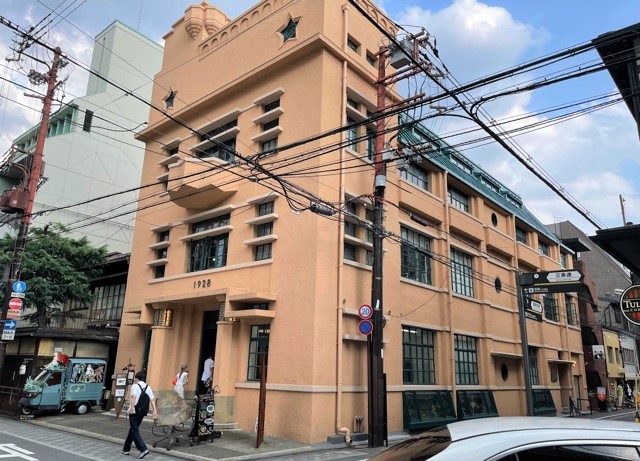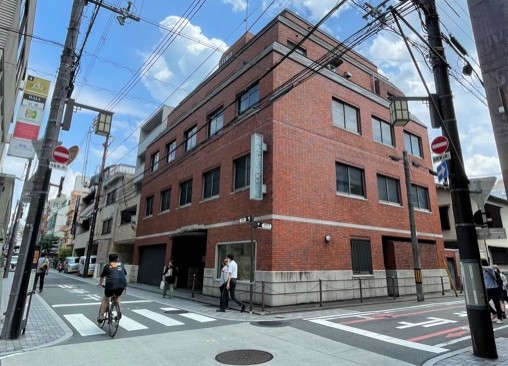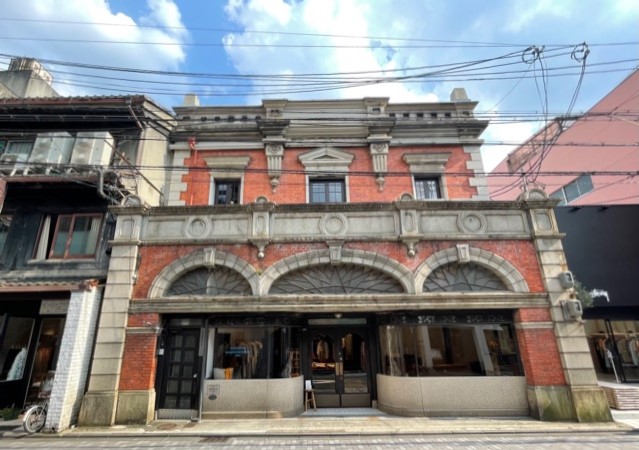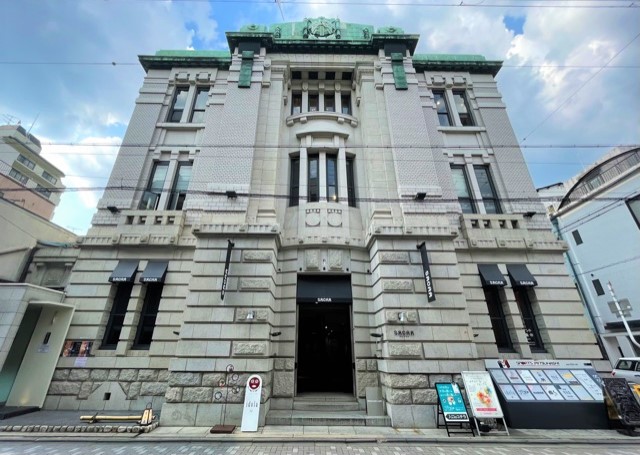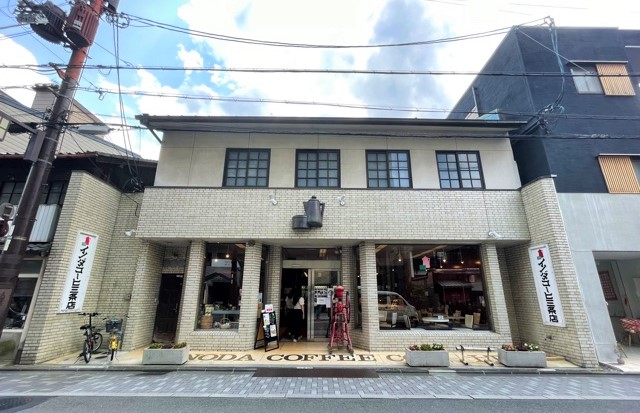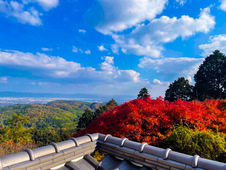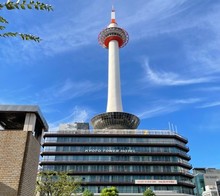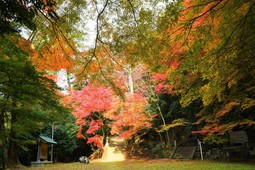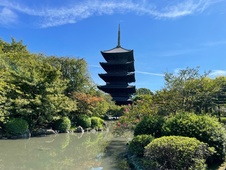- HOME >
- Experience report >
- 【CATCH THE SPIRIT】 Experience report >
- Witness the march of Kyoto architecture over 100 years on Sanjo Street - Part 1 -
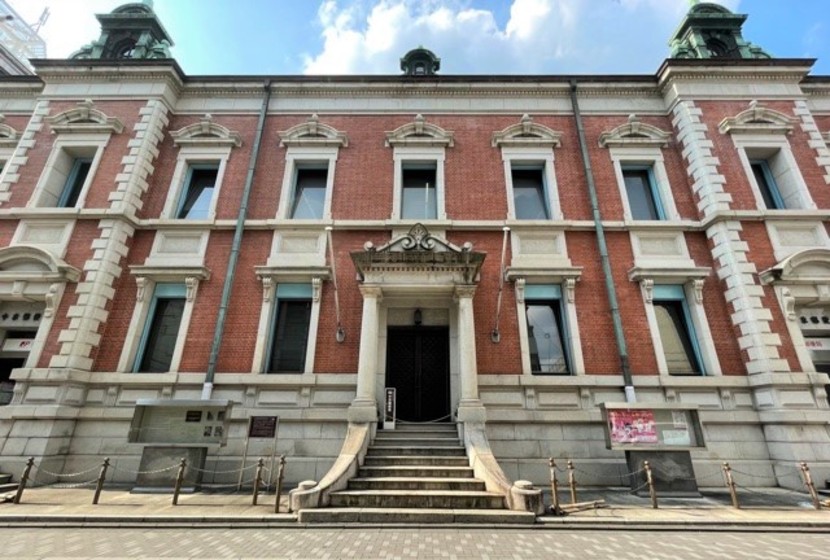
Witness the march of Kyoto architecture over 100 years on Sanjo Street - Part 1 -
Sanjo Street runs through the center of the city from east to west.
In the 17th century, the Tokaido road linked the new capital of Edo in the east to Kyoto, the old capital in the west and its terminus was Sanjo Bridge. People from Edo, current Tokyo or eastern parts of Japan entered the capital through Sanjo street and it became one of the busiest of the old capital's streets.
Following the Meiji Restoration in the late 19th century, Kyoto's modernization began and Sanjo street was the center of a flourishing commercial distric with banks, newspaper company and famous shops.
As time passed and the economy grew, many of these businesses relocated to Shijo street, but there are still a lot of historical buildings from the glory days of Sanjo Street's commercial preeminence.
This area is now designated a historically protected district and a symbol of Kyoto's modernization.
We are going to walk Sanjo street from the intersection of Teramachi beneath a giant animatronic crab to the west and examine the old architecture on the route.
The first structure you will notice on your left as you head west is the 1928 building.
Formerly known as the Kyoto branch of the Mainishi Newspaper, it was designed by Mr. Goichi Takeda, designer, has been called the father of Kansai architecture and constructed in 1928.
The building and its interior is in the Art Deco style and features two star shaped windows on the top part which match the company logo.
In the basement you will find café Independants, a popular venue for young people, students and artists with a unique atmosphere.
On the third floor of the building, there is a theater catering to non-verbal "GEAR" performances. If it rains while you are traveling in Kyoto, it would be a good option to take in a performance that anyone can enjoy regardless of age, nationality or the ability to speak Japanese.
Continuing to the west, you will see a red brick building on the left.
This is the Fukui Asahi do company. They have over hundred years of history selling Japanese Washi paper products including letter sets and postcards. The design of the company logo looks retro and cool. There are a few newer buildings on Sanjo street but they were designed to respect the local historical ambience and they blend in very well. 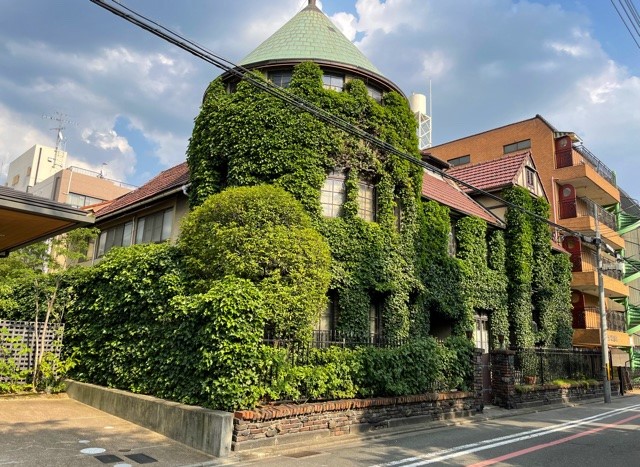
Leaving Sanjo street, if you turn left and head south you will see a three story European style wooden building clad in ivy.
Kawashima clinic built in 1936 has been registered a culturally significant property in 2005. It always catches pepole's attention.
Back on Sanjo street and heading to west again, on the left you will see the former site of the Yabetoku jewelly and watch shop.
The shop was established in 1871 and the building was completed in 1890. It is the oldest commercial brick building in Japan and as such is it very unusual that it is still standing.
The structure now contains MARcourt clothing shop and there is a Machiya style house attached behind the building. A Paul Smith shop is located across the street.
As you reach next intersection, there is a white building on your right.
This is SACRA building finished in 1915, previously known as the Kyoto branch of Fudo Chokin Bank. The building was completed at the end of the Meiji period (1868-1912) when brick houses and buildings were seen everywhere. The building design with its horizontal stripes on the first floor's white walls must have been unique.
Now there are a few shops inside the building and climbing the old squeaking stairs to the second floor, there is a shop called Pundomilia which specializes in preserved flowers where I ordered our bouquets for our wedding and a shop called Idola which sells vintage beeds and buttons.
Continuing west, you will find the Inoda Coffee shop, a Kyoto original.
The main shop and cafe is located next block over. With the familiar red coffe pot design on the front, the sanjo branch was opened in 1970 and retro interior including round tables to remind customers of the old days.
Before many tourists started coming to Kyoto, the cafe was a place where local elderly people gathered and enjoyed chatting. Now the atomospher is a liitle bit more cosmopolitan but you can still enjoy the nostalgic vibe.
Let's take a break and enjoy freshly brewed coffee.



















